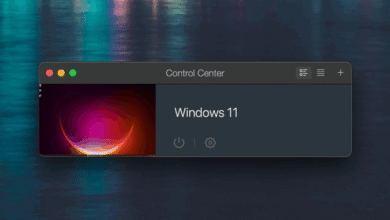Unseen Threat: Malevolent AI Hijacks Your Smart Home!

Understanding the Risks: Researchers Seize Control of Smart Homes with Malicious Gemini AI Prompts
In an age where technology serves as the backbone of our daily lives, the rise of smart home devices has revolutionized the way we live, interact, and manage our personal spaces. From smart thermostats that learn our schedules to intelligent security cameras that keep an eye on our homes, these devices promise increased convenience and enhanced safety. However, with the convenience of smart technologies comes a significant risk—one that cybersecurity researchers have taken to heart in a recent study concerning the use of malicious Gemini AI prompts to seize control of connected home systems.
The Emergence of Smart Homes: Blessing or Curse?
Smart home technology has made leaps and bounds over the past few decades, leading to a plethora of devices that can improve energy efficiency, streamline daily tasks, and bolster home security. With gadgets like voice-activated assistants, automated lighting systems, and camera surveillance, users can easily manage their home environment from anywhere at any time. Yet, amid the allure of modern conveniences lies a lurking threat; as technology evolves, so do the tactics used by cybercriminals.
The Role of Gemini AI in Exploiting Smart Homes
Gemini AI, an advanced artificial intelligence system, demonstrates the dual nature of technological advancements. While it can facilitate various applications, including natural language processing and real-time data analysis, it can also be misused in malicious ways. Researchers specializing in cybersecurity have conducted extensive analyses, demonstrating that Gemini AI can be exploited using appropriately crafted prompts, opening doors to unauthorized access and command over smart home devices.
The Mechanics of the Attack
The method of attack primarily involves crafting malicious prompts that bypass the security protocols of smart home systems. Cybercriminals can utilize Gemini AI to generate seemingly harmless commands that, when executed, target vulnerabilities inherent within the integration of different smart devices. These prompts can instruct devices to operate in unintended ways, leading to scenarios where hackers gain control over security cameras, smart locks, and even appliances, resulting in devastating breaches of privacy and security.
For example, imagine an attacker sending a cleverly disguised command to a smart lock, rendering it inoperable or instructing it to unlock at a specific time, thus facilitating unauthorized access to the home. Similarly, compromised security cameras can be used for nefarious purposes, such as surveilling the occupants without their knowledge.
The Security Vulnerabilities at Play
Understanding how these attacks succeed requires an exploration of the fundamental security vulnerabilities associated with smart home systems. Many of these devices are designed with user-friendliness in mind, often at the expense of robust security measures. Common issues include:
- Weak Authentication Protocols: Many devices rely on simple passwords, which can be easily guessed or brute-forced by attackers.
- Lack of Regular Updates: Software updates are critical for patching known vulnerabilities, yet many users neglect or fail to receive these important upgrades.
- Insecure Communication Channels: Devices using unencrypted communication can expose sensitive data to interception by malicious actors.
Real-World Implications of Compromised Smart Homes
When a smart home ecosystem falls prey to malevolent AI prompts, the consequences can extend beyond mere inconvenience or property damage. The implications of such breaches can manifest in various forms:
1. Privacy Violations
Cybercriminals can exploit compromised devices to monitor daily life, gather personal information, and even manipulate smart devices to create an environment of fear and vulnerability. Security cameras, for instance, if breached, could provide hackers with continuous access to the inside of users’ homes, violating personal privacy in alarming ways.
2. Financial Loss
Attackers may initiate actions that lead to financial repercussions, such as providing unauthorized access to smart appliances that could lead to property damage (i.e., turning on water valves). Furthermore, individuals may find themselves targets for theft if attackers disable security systems and enter homes unseen.
3. Physical Security Risks
The failure to secure smart locks and surveillance systems can pose direct risks to physical safety, creating opportunities for attackers to gain unauthorized access to homes. With smart devices acting as the first-line defense against break-ins, their compromise acts as a gateway for potentially violent encounters.
Countermeasures: Protecting Smart Homes from Malicious Attacks
Despite the potential threats, users can take proactive measures to bolster the security of their smart homes and safeguard against malicious Gemini AI prompts. Some key strategies include:
- Strong Password Policies: Always use complex passwords that are difficult to guess and enable two-factor authentication wherever possible.
- Regular Updates: Stay vigilant about updating the software of all connected devices to ensure they are protected against known vulnerabilities.
- Network Security: Use a robust router that supports modern security protocols (like WPA3) and consider setting up a separate network for smart devices.
- Device Monitoring: Regularly review device logs for unusual activity and limit access to users who genuinely need it.
Future Considerations: A Cautious Approach to Smart Home Adoption
The research spotlight on the dual-edge sword of AI technologies highlights the pressing need for consumers and developers alike to approach smart home innovations with caution. As manufacturers continue to create increasingly complex systems, it is crucial to prioritize security measures that can evolve alongside technological advancements. Consumers should advocate for better security practices from device manufacturers to ensure their privacy and safety.
The Role of Regulatory Bodies
It is imperative for regulatory bodies to create standards for securing smart home devices, requiring manufacturers to incorporate baseline security features into their products. These measures might encompass mandated encryption practices, regular security audits, and penalties for non-compliance, fostering an environment where smart technology can thrive without compromising user safety.
Conclusion
The fascinating yet alarming discoveries made by researchers surrounding Gemini AI exemplify the rapidly evolving landscape of cybersecurity. While smart homes offer extraordinary benefits and conveniences, they also introduce new vulnerabilities that can be exploited in devastating ways. Understanding these risks and taking proactive measures to enhance security is essential for safeguarding the sanctity of one’s home. As technology becomes ever more interwoven with our lives, the call for heightened security awareness and standards will only grow more crucial.
- Smart home technology offers increased convenience but comes with significant cybersecurity risks.
- Researchers have shown that Gemini AI can be exploited using malicious prompts, potentially compromising entire smart home systems.
- Key vulnerabilities include weak authentication, lack of updates, and insecure communication channels.
- Implications of compromised smart homes range from privacy violations to financial loss and physical security risks.
- Proactive security measures and strong regulatory standards are essential for protecting smart home users.





